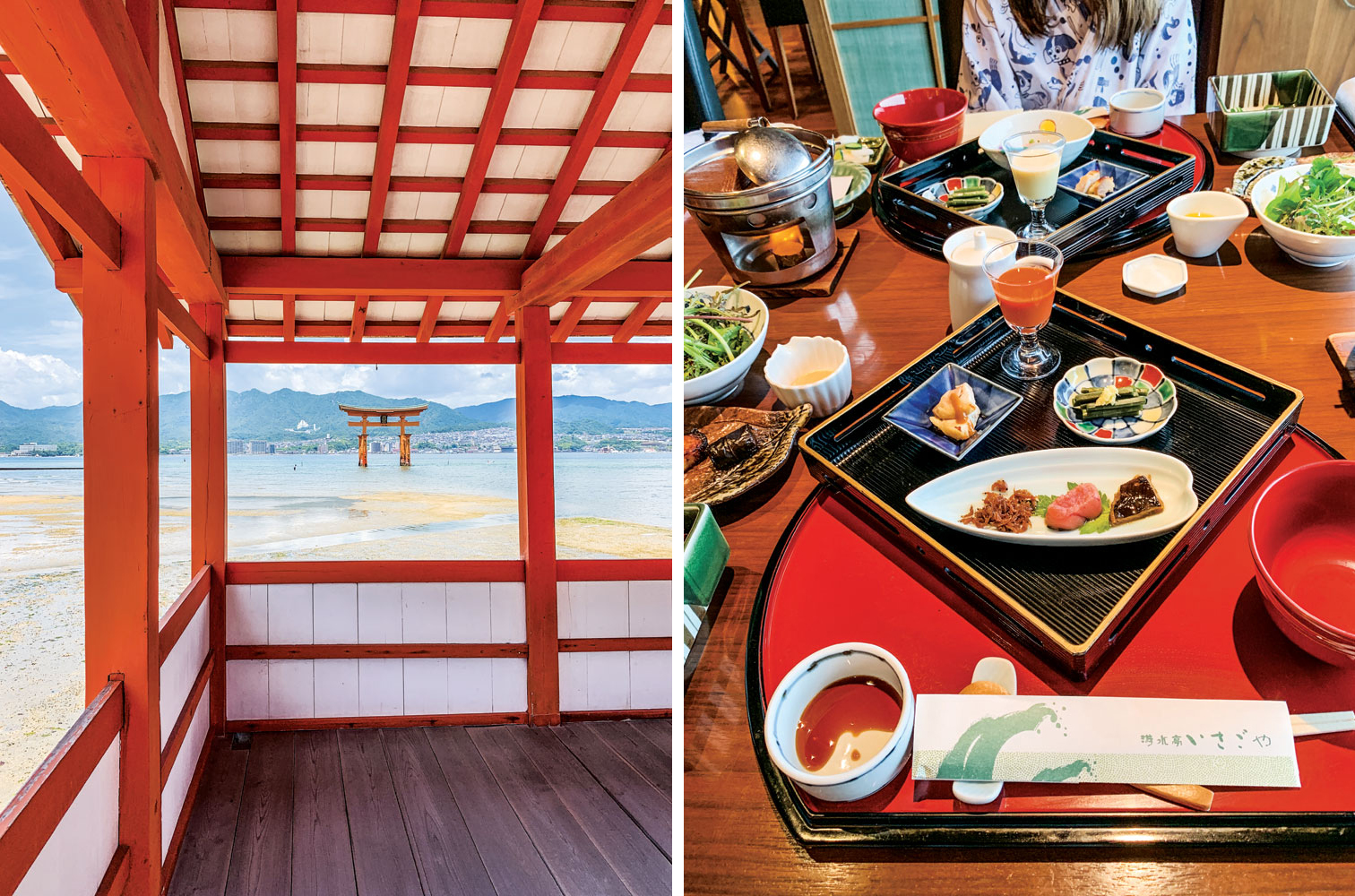
The walk from Hiroshima Station to the museum takes you past the Atomic Bomb Dome, the only structure left standing in the area where the first atomic bomb exploded on August 6, 1945. Photos by Sara Blanchard
Japan, the land of sushi, anime, and kimonos—and so much more.
This summer, we decided to go beyond our usual visits to my Japanese mother’s relatives, and take the children (ages 10 and 8) on a bit of a history tour.

My children, who typically flit through exhibits, deliberately read each panel describing stories and artifacts at the Hiroshima Peace Memorial Museum. Some may be too intense for children under 10.
Hiroshima
With North Korean and Iranian nuclear escalation threats in the news, the main stop was Hiroshima. For my history buff daughter, the Hiroshima Peace Memorial Museum moved her book knowledge about the horrors of nuclear warfare from her head into her heart. Her thoughts after visiting the museum: “The photographs of the children and the stories of survivors—describing the explosion, looking for relatives, seeing dead bodies in the river—were horrible. It was just a normal neighborhood like any of ours, and once the bomb was released, nobody could take it back. People need to know about nuclear war because if something like this is going to happen again, I want people to fight it.”
All of the exhibits have signs in English, and the children peppered us with questions during the walk to dinner. Hiroshima Station, like many major train stations in Japan, has a sophisticated food hall and array of restaurants. Hiroshima is known for its okonomiyaki (or, a Japanese savory pancake); it’s a thin layer of batter and a lot of cabbage over yakisoba noodles, with toppings including oysters, squid, and cheese. The adults loved the meal; the kids stuck with side helpings of fried noodles.

Left: A view of the floating torii gate—the boundary between the human and spirit worlds—in low tide. Built originally in 1168, the great torii is undergoing renovations as of June 2019. Right: A snapshot of one course of our meal at a ryokan, where we wore traditional yukata; cooked fish, soup, rice, and pickled vegetables as palette cleansers, are just some of the staples.
The Floating Shrine
The day after the museum, we boarded a boat from the south end of Hiroshima to Miyajima, a small island less than an hour outside of the city. A designated UNESCO World Heritage Site, it’s famous for Itsukushima shrine and its torii gate, which are built over water and appear as if they’re floating during high tide. Deer roam wild and were amenable to being petted as we walked along a street lined with souvenir shops to the spotless aquarium. There, we were wowed by the frequency of events including watching performing seals, holding starfish, and petting penguins—again, with easy access in English. The ocean breeze and wider, less crowded roads made it a wonderful break for all of us from busy city life in Japan.

The job of a maiko, or apprentice geisha, is to perform songs, dances, and play the shamisen for visitors; they are mainly located in Kyoto and Western Japan. We learned that as Japan has modernized, instead of beginning training in this honorable profession as youth, many maiko aren’t starting until 18 years old; there is a risk that this ancient tradition may disappear if more young women do not choose this as a way of life.
Traditions by the Sea of Japan
A night in a ryokan, or a traditional Japanese inn, while expensive, is worth it to experience traditional Japanese culture. Sleeping on a futon laid for you on a tatami floor, soaking in a communal hot spring bath onsen (though some ban people with tattoos), and eating artfully arranged, flavorful meals are just the ticket to unwinding from the bustle of life. We stayed in a ryokan by the western shores along the Sea of Japan, but there are plenty closer to Tokyo that are just a bullet train ride away and may have more tourist-friendly attitudes.
While in that western area—shaken the following week by a magnitude 6.5 earthquake—we took in a showing of maiko dancers. The maiko gracefully emerged onto the tatami flooring and, accompanied by a shamisen player, performed three dances. Witnessing such living history firsthand impressed upon us the artistry and attention to detail that permeates Japanese culture. It takes maiko nearly two hours to dress in layers of colorful silk kimonos, apply their heavy makeup, and decorate their hair—and they dress nearly every day for lessons and performances.

Left: When entering a shrine, rinse both hands using the ladle at the purification fountain; transfer water into your hand to rinse your mouth and spit out beside the fountain and dump remaining water outside the fountain. Right: Japanese friends arranged for shuji, or calligraphy, lessons for us in Tokyo.
Less History, More Fun
A visit to Japan offers more than its ancient history. The food and energy of Tokyo; the unique twist to the Disney franchise with Tokyo Disney Sea next door to Disneyland; and the summertime firework displays and festivals offer travelers a look at modern Japanese culture.
Sara Blanchard is co-host of the Dear White Women podcast. If you have a story, or know of a NE Denver neighbor involved in interesting or surprising endeavors, please send a brief note to me@sarablanchard.com.



0 Comments